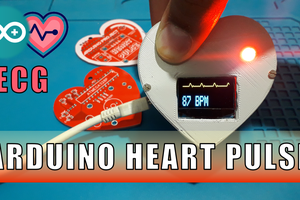Hey guys! I Hope you already enjoyed my previous instructable "Arduino MIDI Controller DIY" and you are ready for a new one, as usual I made this tutorial to guide you step by step while making this kind of super amazing low cost electronic projects which is the "Arduino LIXIE clock".
During the making of this project, we tried to make sure that this instructable will be the best guide for you in order to help you if you want to make your own digital clock, so we hope that this instructable contain the needed documents.
This project is so handy to make specially after getting the customized PCB that we’ve ordered from JLCPCB to improve the appearance of our clock and also there is enough documents and codes in this guide to allow you create your Arduino clock easily. We've made this project in just 4 days only, just three days to get all the needed parts and finish the hardware making and the assemble, then we have prepared the code to suit our project and the android app development takes one day.
Before starting let’s see first
What you will learn from this instructable:
- Making the right hardware selection for your project depending on its functionalities.
- Understand the LIXIE display technology.
- Prepare the circuit diagram to connect all the choosen components.
- Assemble all the project parts (mechanical and electronic assembly)..
- start your own digital clock.
How It Works the LIXIE Display
As always I make this short description where I collect some data from the internet about the project that we are about to create.
So starting with the basics, we need to define first the Lixie display method and how it works, the principle is as simple as this; once you cut a Plexiglas part and make some laser engraved logos or shapes you can light up these shapes by placing an LED near any side of the parts sides and in our case we will engrave the numbers from 0 to 9 in 10 parts and we will do the same thing four time for four digits, you can add also the two dots to distinguish the hours and the minutes after that we will make a design that could hold all these Plexiglas parts together and place two LEDs in the bottom side of each Plexiglas part so we have a total of 82 LEDs.
About the wiring of all these LEDs with the Arduino, we will solder the Anodes of same rows together to get 10 rows and the Cathodes of the same Columns together to get a matrix of 10 rows 4 columns about the dots it is easy to control them. After that it will be so easy to turn On Off the desired digit using the Arduino code, and if you want to get the basics of how to control LEDs of the same matrix you can refer to our tutorial where I explained how to control a Cube of LEDs using the matrix method.
CAD and Hardware Parts
Starting with the laser engraving and cutting parts, I made the above design using solidworks software and you can get the DXF files from the download link, this design is 100% recommended to help you making your device since it is the only holder of the plexiglass order, after preparing the design I have got my parts very well manufactured and ready for the action. and as you can see in the last photo we prepared the numbers engaraved four times for each digit.
Circuit Diagram
Moving to the electronics, I have created thiscircuit diagram that includes all the necessary parts required for this project.
I will use also a RTC module components to restore the time and date configuration once the device is turned off so you can use a RTC module or you can simply get the DS3231integrated circuit for RTC and in both case you will establish a I²C communicationwith the MCU for data transmission. I will use a buzzer for the alarms because we will add this feature in our clock so we can set some alrams and in order to interface with the clock I will use a Bluetooth module adjust the time and date using an android application.
 DIY GUY Chris
DIY GUY Chris








 selena1995
selena1995
